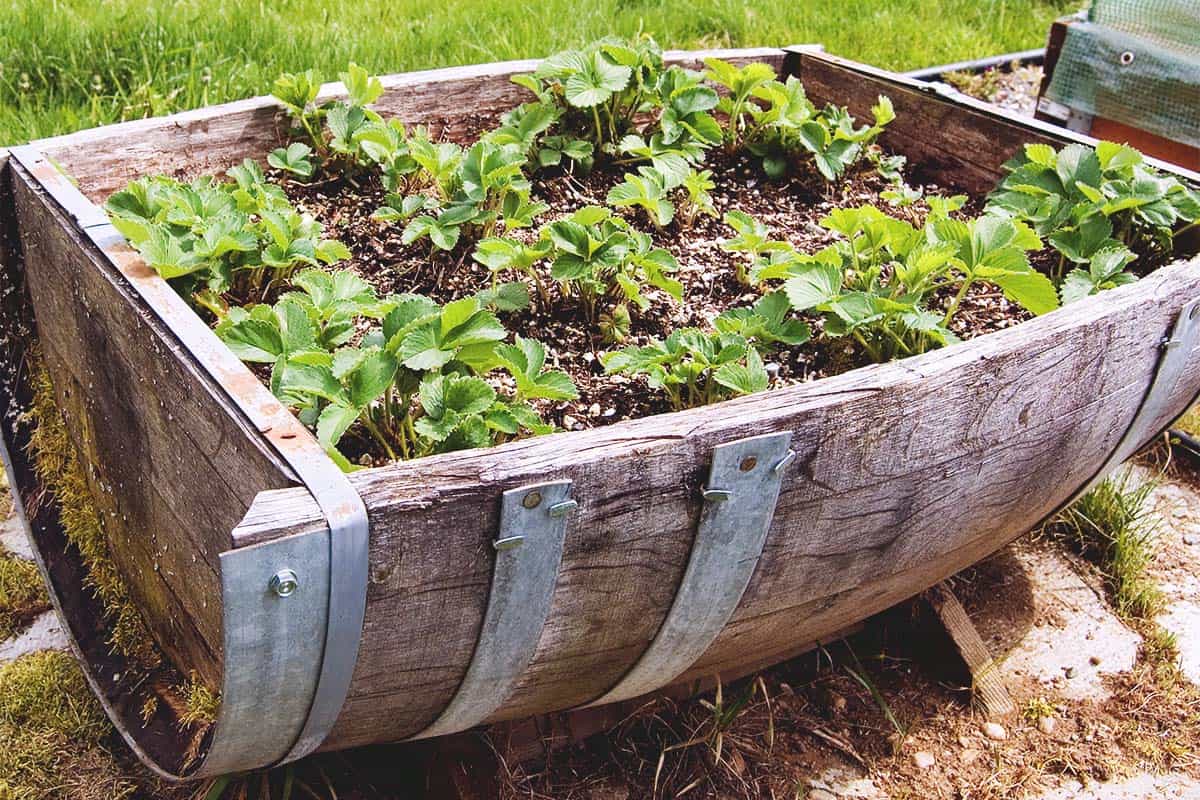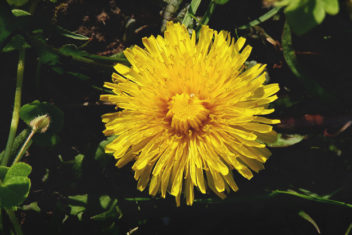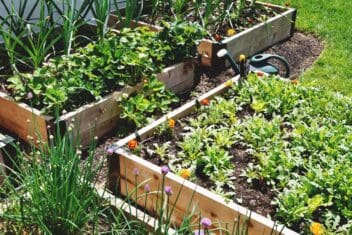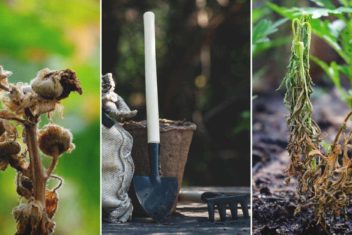A lot of people think you have to be in great health with excellent mobility to grow a garden. There’s so much lifting of things like bags of compost. You have to push around a wheelbarrow. Then there are all those watering cans to cart around to plants.
Don’t forget the squatting to weed and seed. Of course, you have to dig big holes too!
Frankly, you do have to be in a state of peak fitness to garden like that. But luckily, you don’t have to garden like that at all. There are plenty of ways to garden smart rather than relying on brawn and bending.
Let me inspire you to garden at any age and even with ailments that make traditional gardening more difficult with these smart tricks and shortcuts.
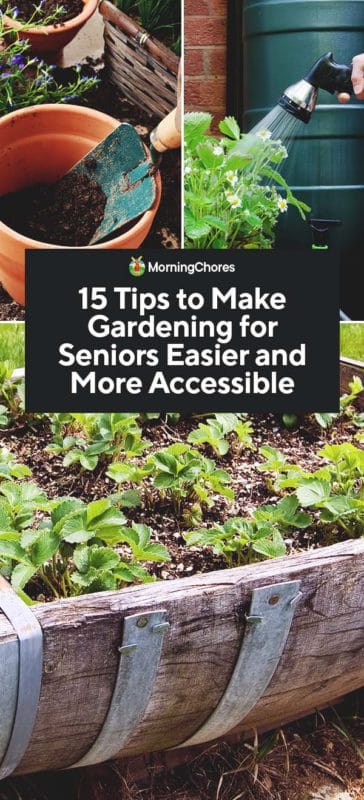
Improve Your Mobility
I have a friend who has been gardening her entire adult life. When some age-related health conditions made it impossible to reach her in-ground garden beds, she still refused to stop gardening.
Instead, she widened the spaces between her beds so she could fit her golf cart through. She lost some garden space, but she was able to keep on gardening.
1. Use Wheels
While not everyone can get or has a golf cart to whizz around the garden with, there are a few other options that will also give you increased mobility.
These days riding lawnmowers all have options for attachments such as pulling a cart. A popular workhorse is the 4-wheeler or ATV, and then for extreme versatility, consider a farm utility vehicle.
Read our discussion on 7 Helpful Farm Utility Vehicles.
3. Optimize Space & Heavy Lifting
As with my friend I mentioned before, she had to change her gardening space to accommodate her golf cart, and for whichever option you select for your own mobility, you will also have to adapt your garden layout to make more room for you to maneuver.
Even if you are restricted to a wheelchair, you will need extra space in your garden to allow you to easily wheel around and not get stuck in a dead-end. With some creativity, a wheelchair can be adapted with attachments for bags and a ‘desk’ over the lap, it all depends on your creativity and your ability to manage a somewhat heavier wheelchair.
My friend’s solution for all the heavy lifting that goes with garden materials is also brilliantly simple. She has the people at the store load her car by placing big bags of garden amendments on the seats close to the doors. Then, when she gets home, she uses a hand shovel to transfer the amendments into smaller bags that she can easily lift.
Improved Tools
3. Re-think Your Tools
Further using her creativity, my friend engineered tools to use to seed, harvest, and weed right from the seat of her cart.
For example, she created her own long-reach plant seeder. She did this by attaching a spoon to the end of a hard PVC pipe. She uses the spoon to make divots in the soil.
Then she drops the seeds down the pipe tube. Finally, she uses the spoon end to cover the seeds with soil. Using this method, she seeds her whole garden while comfortably seated in her golf cart.
4. Make Use of a Garden Seat Kneeler
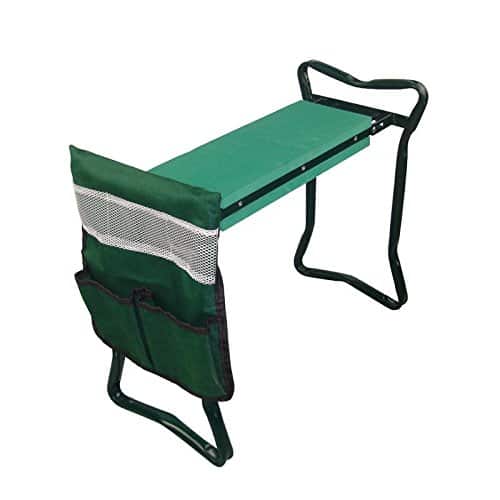
Can you still reach down to tie your shoes without discomfort? If so, then you may be able to keep on gardening in the ground with the use of a garden seat kneeler.
These are lightweight devices that do double duty as a kneeler and a bench. If you use the bench side, you can sit on them as you do your weeding and harvesting using similar muscles as you use to tie your shoes.
You will want to keep your garden rows narrow to make reaching easy. Alternatively, you can access wider rows from both sides. This bench tool makes it possible to garden while taking a load off! That sounds like a smart gardening for seniors strategy to me.
On the flip side, the seat portion becomes a kneeling board. The bench legs become handles you can use to push yourself up. So, if you are still able to kneel, but just need a little help up, the kneeler is a perfect self-help solution.
5. Rolling Garden Benches
If you want to go for a deluxe garden bench, you can also find rolling garden benches. These are basically like garden carts with handles. They usually have room to hold your tools and a few plants or some small bags of potting soil.
But they also have heavy-duty garden wheels and easy steering. That makes them useful for navigating the hard corners of your garden beds and landscape.
They aren’t quite as luxurious as gardening from a golf cart, as my friend does, but they don’t take up quite as much room or cost nearly as much as a golf cart either!
6. Long-handled vs Short-handled Tools
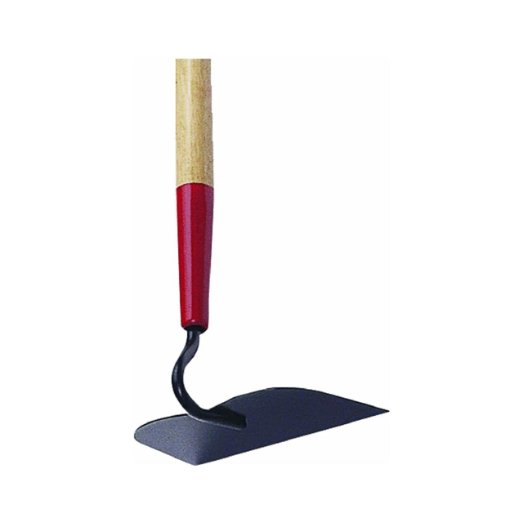
Garden tools often come in two forms, hand-held or long-handled. For example, you can get a hand-held hoe or a long-handled hoe. The hand-held hoe requires you to get on the ground or use the kneeler bench to get down and up. Whereas, the long-handled tools can be operated from a standing position.
Unless you have easily workable soil, it can require a lot of strength to use long-handled tools. Trying to hoe weeds in compacted soil using a long-handled hoe is like trying to scrape pavement off the road. But when you put them to use in raised beds that are filled with potting soil or square-foot mix, they are a fabulous answer to gardening for seniors while standing.
Contained Gardening Methods
That brings me to my next recommendation. If you have difficulty getting up and down, then raised beds or containers might be a better answer.
7. Garden in Raised Beds
Raised beds come in all shapes and sizes. Here are some things to think about before you install them.
– Ground Level Beds
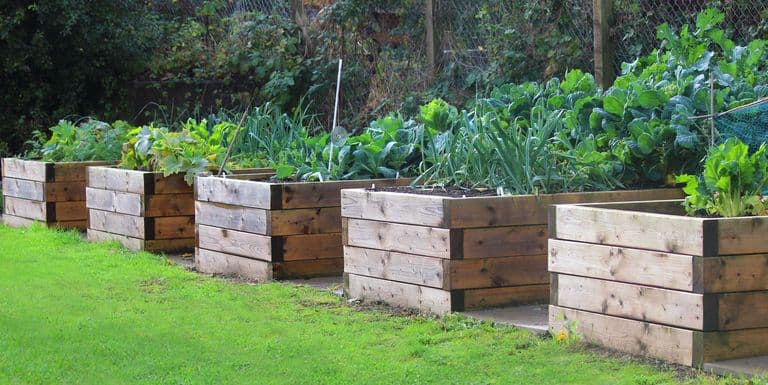
Beds that are 6-8 inches deep and sit on top of the soil can be accessed using long-handled tools, benches, or kneelers. As long as you fill them with lightweight soil mixes that include things like peat moss or vermiculite, working the beds can be done easily from a standing or sitting position.
– Knee Wall Beds
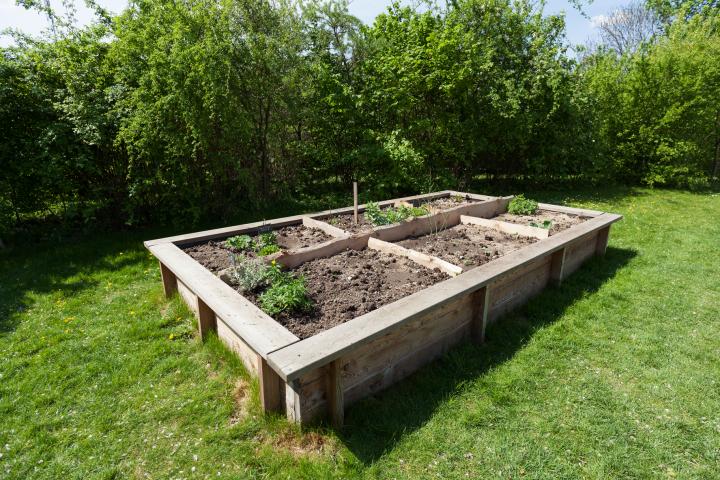
Personally, though, if you are going to go to the trouble of building beds (or hiring someone to do it), opting for a bed style that includes a knee wall that can be used as a bench is an even better bet. Then, you can skip dragging a bench out to the garden and instead just sit on the edge of your beds to garden.
– Waist Height Beds
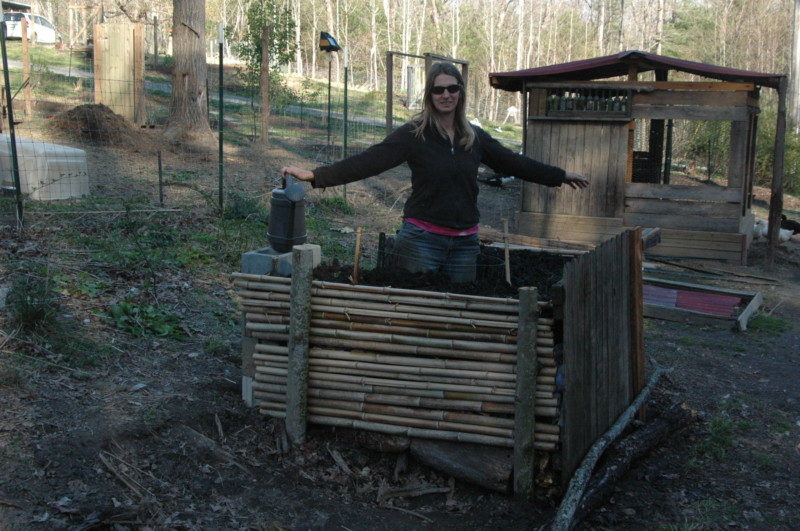
Some people even opt for taller beds that you can stand upright to work in them. A keyhole bed is a good example of this. I love these kind of beds for the ease of gardening for seniors.
Just keep in mind that when you need to do things like add compost, you’ll have to be able to lift things up from the ground to your waist level. Bending and lifting at the same time is a common cause of injury as we age especially if you don’t lift by bending your knees.
So, you’ll want to find ways to avoid lifting heavy things into your bed. You can do what my golf-cart gardening friend does and unload from the seat of your car by opening packages and moving smaller increments at a time.
– Salad Table Garden

The first time I saw a salad table I immediately thought ‘this is just what my mom needs.’ It optimizes your space, can be set up on a balcony and brings your salad veggies up to a comfortable height. No matter how restricted you are in your movements, a salad table can make gardening for seniors and anyone else much easier.
8. Try Large Container Gardening
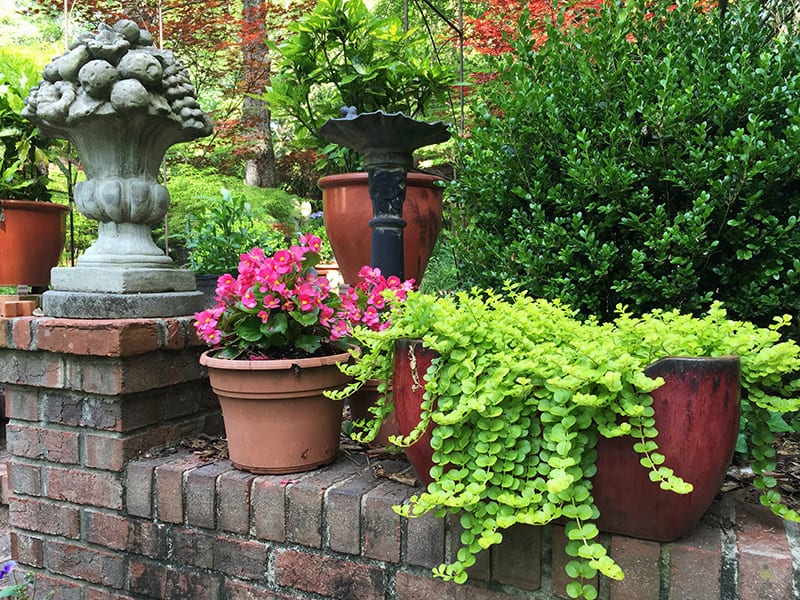
Along with raised bed gardening, you can also consider container gardening for seniors. Containers full of soil are heavy. As such, you’ll want to put large containers in a permanent location and treat them like a raised bed.
You may also want to opt for lightweight containers such as those made out of plastic or grow bags. With large enough containers, you can grow a lot of food even in a small space. Dwarf fruit trees and shrubs may also be good options.
If you do need to move your plants, such as indoors for the winter, consider asking a family member or neighbor for help. Or use a hand-truck rather than lifting.
In our post discussing the best wheelbarrow, option number 5 is a versatile workhorse, with an innovative plant mover dolly which is a brilliant way to move heavy pots around. Still, you would need a strong hand to manipulate the wheelbarrow, so asking a neighbor or friend would still be a good idea.
– Gardening in Tires
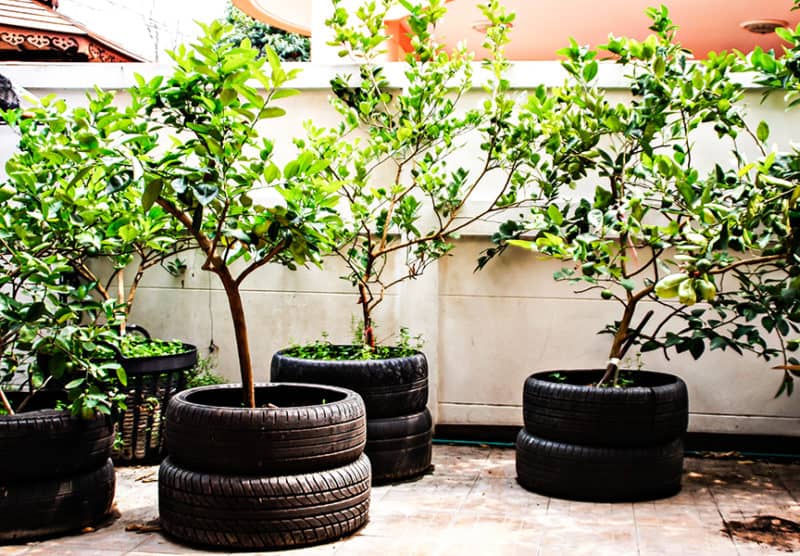
By gardening in tires, you not only reduce, reuse, and recycle, but you also make gardening for seniors easier and more accessible. Tires can be stacked on top of each other creating deep beds. You can place them wide apart to navigate through if you are using a mobile device, even something like a golf cart, or even pile them up to be just the right height for someone in a wheelchair.
We share 13 great ideas tire gardens ideas here, as well as a guide on how to create a tire garden.
9. Use a Multitude of Small Containers
Or, rather than growing plants in large containers opt for plants that do well in small containers. You can even grow a full edible container garden using annual vegetables with shallow roots, dwarf-sized or compact perennial plants, or grow full-sized vegetables but harvest in baby form.
I recently picked up a blueberry plant that can produce abundant fruit in a two-gallon soil pot. I also came across Tom Thumb green peas that get less than a foot tall and still make abundant full-sized pea pods even on a sunny windowsill. There are also continuous harvest cherry tomatoes that produce in less than 1 gallon-sized pots.
Read our post on window box gardening for seniors with ideas on what plants to use, or these brilliant ideas for a hanging vegetable garden.
You may need to grow lots of little containers to get good production. But you can put them on an outdoor tabletop to make tending and harvesting easy. Plus, since they are small in size, you can lift and move them with less difficulty when needed.
Easy Moisture Management
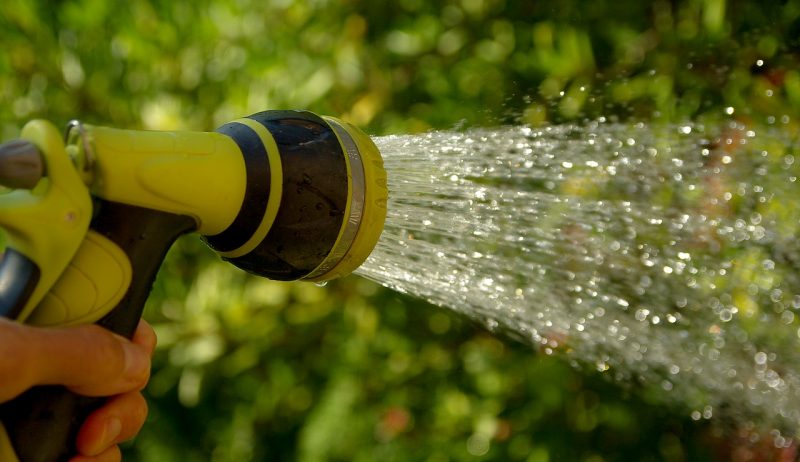
I have to tell you, water is heavy. Most plants need the equivalent of an inch of rain per week. An inch of rain weighs about 5.2 pounds per square foot of soil.
So, if you have a 4 x 4 square foot garden bed, and it doesn’t rain for a week, you’ll need to deliver about 22 pounds of water to your bed. In hot dry weather, plants need even more moisture, which means that weight goes up to 30 pounds or more.
10. Install an Irrigation System
You can avoid lifting water by using installed irrigation rather than a watering can. Drip tape and tubes are relatively lightweight. If you buy kits that allow you to install your own emitters, you can even use them for container gardens simply by putting the emitters where your plants are.
Irrigation takes planning and access to a pressurized water source such as a house hose bibb. But once installed, you don’t have to lug water around anymore.
11. Use Mulch to Preserve Water
Mulch helps preserve water in the soil so you don’t have to water as frequently. If irrigation isn’t possible, then consider adding mulch around your plants to lighten your water load.
Mulch can be heavy to haul, especially when wet. Ask retailers for dry bags. Or consider lightweight options such as covering the soil with newspapers before watering. Once wet, those papers won’t move and can preserve moisture for weeks before they are decomposed.
12. Invest in Lightweight Hoses
I can tell you that just about every gardener hates lugging around heavy garden hoses. As such, manufacturers now make heavy-duty, lightweight hoses that can weigh 30-40% less than traditional hoses.
If you do need to move hoses around your garden, spending a little extra to buy light-weight hoses can save your back and your frustration level! Also, make sure your hoses are empty when you move them. If you have a spray nozzle on your hose, you’ll need to discharge it fully after turning off your water.
13. Self-Watering Systems
If you are going to grow in containers, then you may also want to consider self-watering planters. These have water reservoirs that deliver water when needed.
Now, you may still have to lug water to your device. However, bottom watering systems often use less water than top watering. Also, you can fill them in smaller increments rather than adding gallons at a time.
Read our post with ideas for automatic watering systems you can set up yourself.
Alternative Gardening Methods for Seniors
So far we’ve been talking mostly about adapting traditional gardening methods such as in-ground, raised beds, or container gardening. These days though, there are lots more options for gardening for seniors.
14. Stay Sharp with Hydroponics
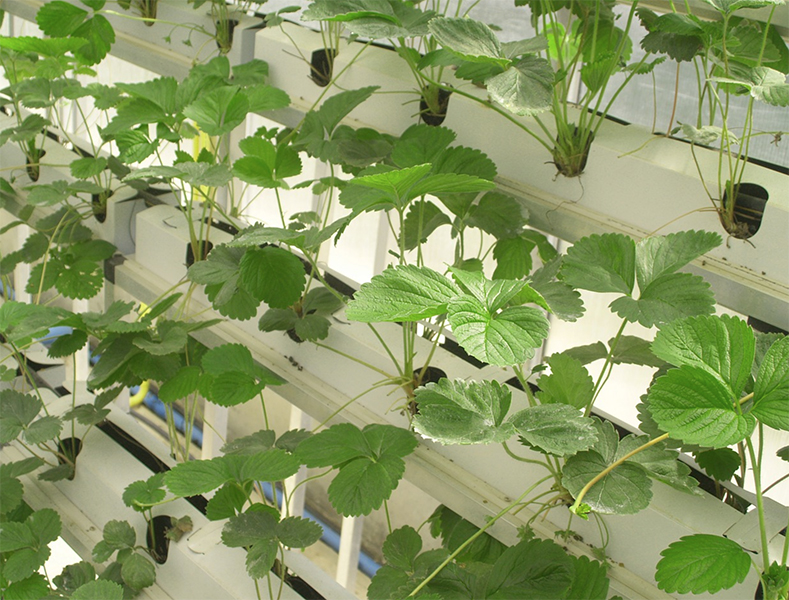
You can buy lightweight hydroponic plant kits that sit on your countertop. You can also set up systems using PVC or other materials to garden vertically so bending isn’t as necessary. IF you install lights, you can even grow them indoors.
As we age, the old adage “use it or lose it” rings all too true. With hydroponic gardening for seniors, you have to pay attention to things like pH and nutrients and make some calculations to have good results long term. You also need to learn to use pumps and timers and such.
Mastering these new skills and managing your hydroponic systems can help you keep learning and focusing so that your mental skills stay sharp.
15. Go Vertical
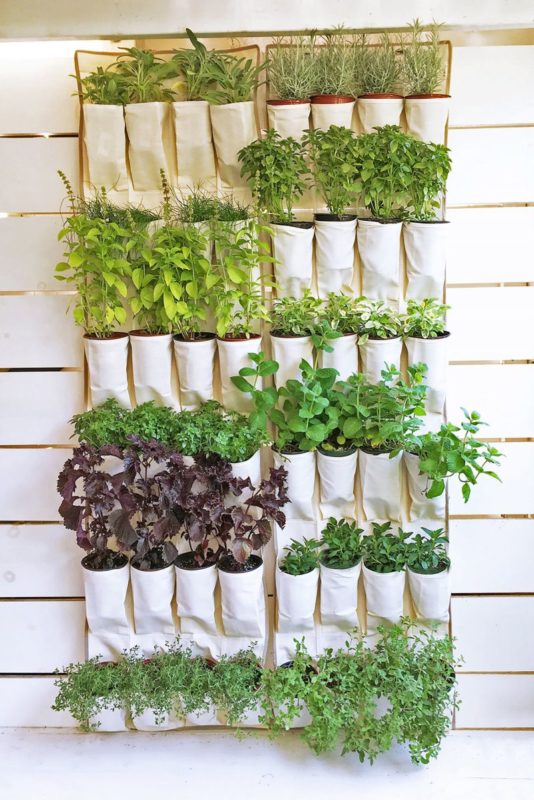
– Vertical Gardening and Living Walls
Vertical gardening is now easier than ever. There are lots of different designs of wall mounted plant pouches and self-watering planters you can buy or DIY.
You can add self-circulating watering systems that use pumps to pull water from a ground-level reservoir to a drip irrigation system that starts at the top.
These can be used indoors or out. They can be planted with things you can use in small containers including vegetables. Or you can stock them with succulents and ferns for beauty and the pleasure of gardening.
The sky (or your ceiling) is the limit when it comes to ways to garden vertically!
Although this next topic – living walls – is not quite applicable to people with reduced mobility, it is still stunningly beautiful to see what can be done when thinking outside of the box, and I gladly share the How to Make a Living Wall post with you.
– Tower Garden
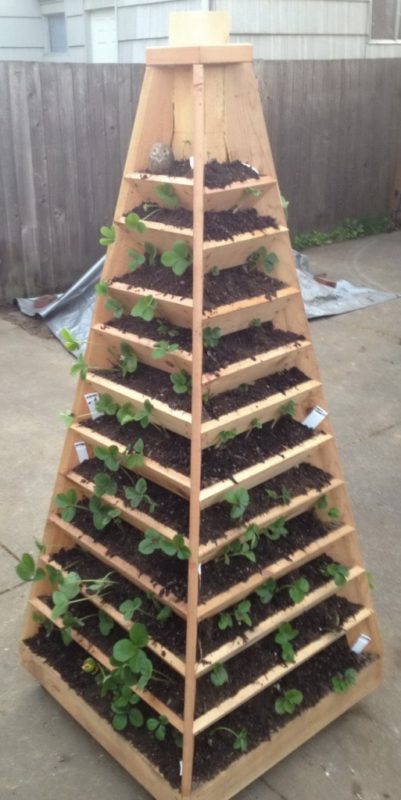
A tower garden makes optimal use of garden space. If you had to reduce your gardening space to improve your mobility, then a tower garden can give you so much value back.
It also places your veggies and fruit within easy reach and looks beautiful in my opinion. We share a few clever tower garden ideas, and how to create them.
Gardening Longevity
Hopefully, I’ve convinced you that there are all sorts of ways to make gardening for seniors accessible no matter the age and ability level. But just in case you need a little more encouragement, think about this:
Gardening can make you live longer (maybe even to 100 years of age) and may reduce your risk of dementia by 36%.
